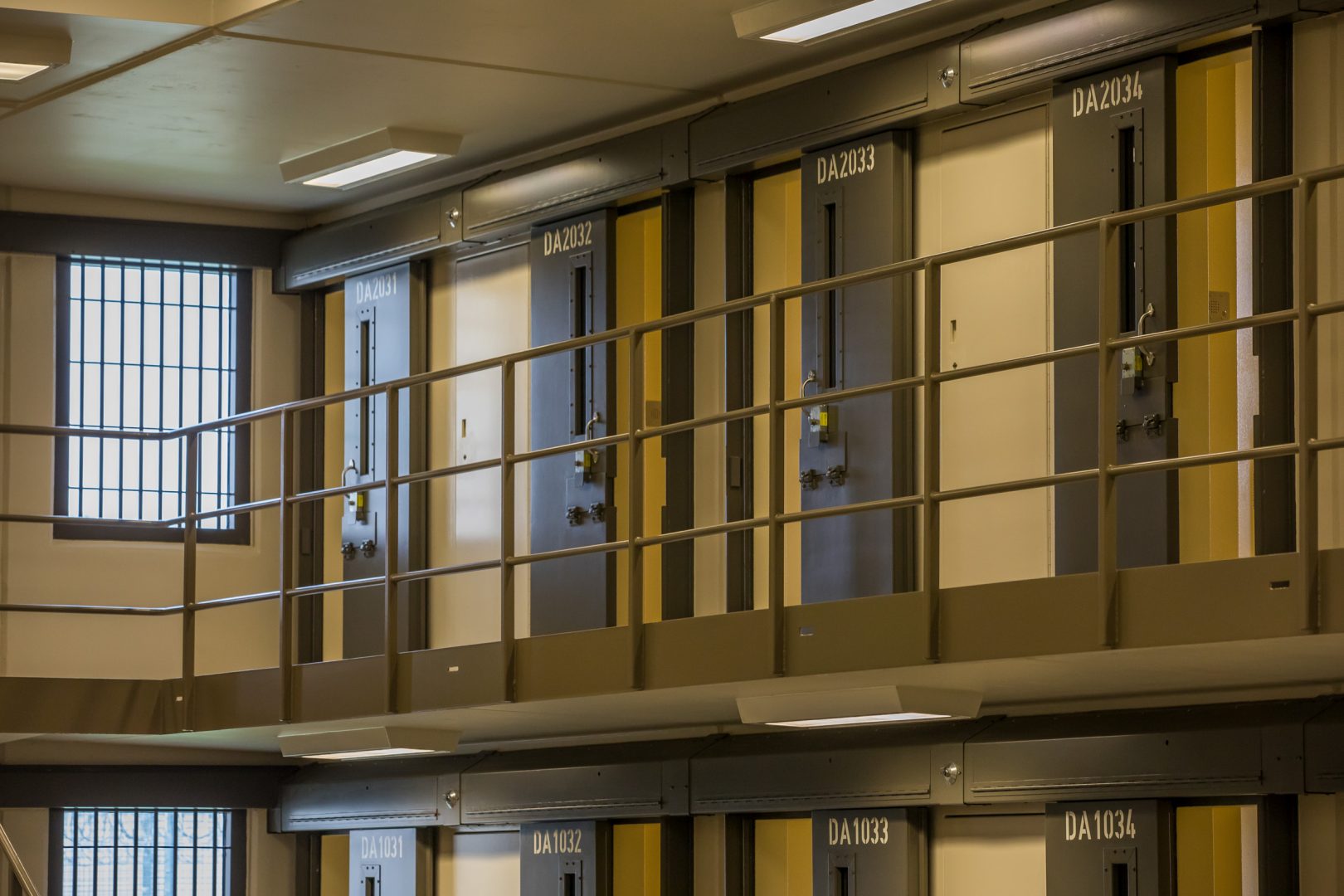
The area where the inmate lived at SCI Phoenix has been placed under quarantine, officials said.
Commonwealth Media Services

The area where the inmate lived at SCI Phoenix has been placed under quarantine, officials said.
Commonwealth Media Services

Commonwealth Media Services
The area where the inmate lived at SCI Phoenix has been placed under quarantine, officials said.
(Washington) — Prisons across the country have placed prisoners on lockdown — they’re kept in their cells mostly around the clock — as a way to stop the spread of the coronavirus. Now prison reformers are worried that the response has increased the use of a practice they’ve long fought: solitary confinement.
“We’re starting to see an alarming trend in light of COVID-19,” says Jessica Sandoval of Unlock the Box, a coalition of groups fighting solitary confinement, including the ACLU and the National Religious Campaign Against Torture.
That trend is outlined in their new report Solitary Confinement is Never the Answer.
Before the coronavirus, according to the report, there were 60,000 people in solitary confinement. Now, in response to the pandemic, 300,000 state and federal prisoners have been confined to their cells. They’ve been placed in solitary confinement or in lockdown.
Lockdown varies from prison to prison. Sandoval says in most cases, prisoners can’t leave their cells for meals, exercise, or prison jobs and can’t get visits from family. There might also be limits on mail and phone calls.
Sandoval worries that because it’s hard to know what goes on inside prisons some of these restrictions will stick.
“We believe that this is the start of a trend to continue to institutionalize the practice of solitary confinement,” says Sandoval.
What you should know
» Coronavirus facts & FAQ
» Day-by-day look at coronavirus disease cases in Pa.
» What the governor’s stay-at-home order means
The United States stands out, among Western and industrialized countries, for its use of extended solitary confinement in prisons.
But in recent years, some states and the federal government have started making reform. In some prisons, children, pregnant women or people with significant mental illness can no longer be held in solitary confinement.
In April, to stop the spread of the coronavirus, the federal Bureau of Prisons started restricting the movement of prisoners.
Then in the first week of June, all prisoners were put on a rare nationwide lockdown — this time because of fears of how prisoners might respond to the national protests over police abuse and the killing of George Floyd.
That lockdown has been lifted, although restrictions are still in place for COVID-19. The Bureau of Prisons says it hopes “inmates will be restored to limited movement in the very near future.”
The coronavirus can spread quickly in prisons, just like in nursing homes or other places where people live close together.
There’s been consensus from advocates, prison officials and Attorney General Bill Barr that the best public health response is to “de-densify.” It means prison systems release as many prisoners as possible: Those at the end of their sentence, the elderly, or ones who are not dangerous can go on home detention. The fewer people in a prison, the easier it is to space out the people who remain and to prevent prisoners and prison staff from getting sick.
Still, Judith Resnik, a Yale Law School professor who studies solitary confinement, says only small numbers of prisoners have been released.
“What did Attorney General Barr do?” says Resnik, who has worked on court petitions to get people out. “He said on April the third: ‘Go to it, Bureau of Prisons, find people who are medically vulnerable and eligible to leave, and leave.’ And the saddest part of the last few months which trial judges across the United States have seen, is how slow and unenergetic the bureau was in finding routes for some people to leave.”
Dr. Brie Williams, a physician at the University of California, San Francisco, who also runs a program called AMEND, which works with prisons on solutions to public health problems, says a medical quarantine inside prisons, along with widespread testing, treatment and isolation, makes sense. But she says these need to be temporary measures, not drawn out lockdowns.
And she points to a history of prisons using solitary confinement to deal with other health issues like prisoners who are suicidal or those with serious mental illness. She says that’s wrong.
“There is really a long legacy of many prisons — not all — but many prisons turning to solitary confinement, turning to lockdown in the face of other public health problems,” she says. “So there’s always a concern that once the system is sort of used to one mode of controlling people that that will continue.”

Get insights into WITF’s newsroom and an invitation to join in the pursuit of trustworthy journalism.
The days of journalism’s one-way street of simply producing stories for the public have long been over. Now, it’s time to find better ways to interact with you and ensure we meet your high standards of what a credible media organization should be.